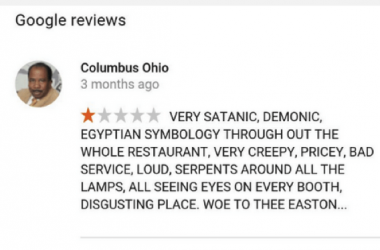Within the HTML code of a website, meta tags exist to provide data about the website, notably to search engines. Within a meta tag is a meta title tag, meta keyword tag and the meta description tag. The meta description tag provides a description of a web site’s content on the search engine result page (SERP), allowing users to preview a 160 character maximum snippet of a web page. The meta description SEO component is an HTML tag, and together with the other attributes of the meta tag, provide metadata about the site via the <head> section of the web page. This metadata can then be read by internet browsers, search engines and other online services to get necessary information about your website and will appear in your HTML coding like this:
<head>
<meta name=”description” content=”Example meta description SEO code.”>
</head>
Search engines gather an archive of websites to display through a process known as indexing, which involves bots or crawlers that are constantly scanning the web and indexing the information, to be available when a search query is entered. With billions of websites indexed by these search engines and needing to identify what to show on the SERP in response to the search query, the search engines scan not only the pages of the website, but also the coding to determine attributes such as the meta description. The meta description tags are an important attribute in relation to search engine rankings, as they play an important part in getting traffic to your site and improving your click-through rate. These summaries allow you to advertise your content to users, informing them whether or not the web page meets their demands for the information they’re searching for. Therefore, the meta description essentially acts as your ad copy and needs to encourage users to visit your website, through a compelling and relevant description. The relationship between the meta description and the click-through rate is important, as the click-through rate of the website is a factor in the ranking process. If a result receives a high click-through rate, this is a sign to the search engine that the result is a suitable match to the search query. In this way, the meta description plays an important part in the success of a website’s ranking and should therefore include keywords relevant to the content of the website.
The digital world is constantly changing and evolving, and the process and use of meta descriptions has changed over the years.
Furthermore, with the constantly changing nature of the digital world, new approaches are developed by users attempting to abuse it, to increase click-through rate and get on top of the SERP’s. Including important keywords within the meta description increases the likelihood that a user will click through to your website, so it was common for people to attempt to manipulate the search engine, by “stuffing” the meta descriptions with popular, yet irrelevant, keywords believed to receive a greater click-through rate and result in higher rankings. Similarly, spamming the meta description with specific keyword phrases, repeating them in an attempt to emphasise the keyword was a technique used to take advantage of the system. Instead of these methods that misuse the meta description, there are processes users have employed, by optimising their meta descriptions, that have strengthened their results. Certain characteristics of your meta description will enhance the click-through rate, by ensuring the searchers are invested in the contents of the web page. Making the meta description actionable, in the way of an invitation to the web page, will direct traffic to the site. Additionally, including a call-to-action furthers this, by welcoming them to and tempting them to learn more about the web page. By including structured content or rich snippet markups, you can add additional information that could influence the user, including star ratings, customer ratings, product information, prices and availability. You can also use Google’s Data Highlighter tool to write structured data without the use of coding.
To optimise your site by using Schema Markup, watch this video:
To ensure that the entire meta description is accessible, the ideal character length is between 150 and 160 characters, as search engines tend to trim snippets longer than 160 characters. And very importantly, the meta description should match the content of the website, to avoid an increasing bounce rate.
The meta description is essentially a marketing message for the associated web page and should emphasise the purpose and value of the related web page. By ensuring a descriptive and persuasive meta description that introduces the searcher to the web page, highlights the relevant keywords and invites a response, the user should be persuaded enough to be curious about the website’s content and subsequently click through to the website. Seeing this, we can appreciate how the differences between good and bad meta descriptions can have a direct influence on the click-through rate of a website.
‘melbourne restaurant’
Good example of meta description
The meta description for Trunk is an ideal length of less than 160 characters and includes a call-to-action by containing the words ‘book your table today’, and uses language that attracts the user.
Bad example of meta description
Cumulus Inc appears to lack a meta description, instead having information pulled from the website by Google. Therefore, the information doesn’t appeal to the customers, and fails to contain any indication of food or restaurants within the description.
‘samsung galaxy’
Good example of meta description
The meta description includes a rich snippet markup with a star rating and structured content focusing on the technical specifications of the phone, which would target those users who know what they want and are specifically looking for that product, but are interested in learning more information about the product.
Bad example of meta description
Samsung Australia’s meta description was likely produced automatically by Google via information from the Samsung Australia website.
Yet, the success of your meta description might not depend solely on the language you have utilised and the content you have or have not included. Duplicating meta descriptions across multiple pages of your website can often be harmful to your ranking and should be avoided. If you aren’t able to create a unique meta description for each individual web page, it is potentially better to not include a meta description on every page. This is because duplicate meta descriptions could impact how search engines treat your website and also the manner in which your audience responds to your website. When there are duplicate meta descriptions, search engines could have some trouble identifying which one is more relevant to the search query. As a result, there is the potential for loss in rankings, and therefore loss in traffic, as search engines generally won’t show duplicate content and are forced to choose one to display over the other. With duplicate descriptions, search engines and the user may devalue your content, as it isn’t seen as unique or original. If you are unsure about the potential success of certain meta descriptions, testing different variations to see which results in an increase in click-throughs is beneficial method, investigating different lengths, phrasing, language and positioning of the keywords.
Keep in mind, if employed appropriately, meta descriptions can increase click-through traffic. As a result, this will increase your ranking and is, consequently, a vital attribute in optimising your website and should not be disregarded. For more information, contact SEO Sydney!






